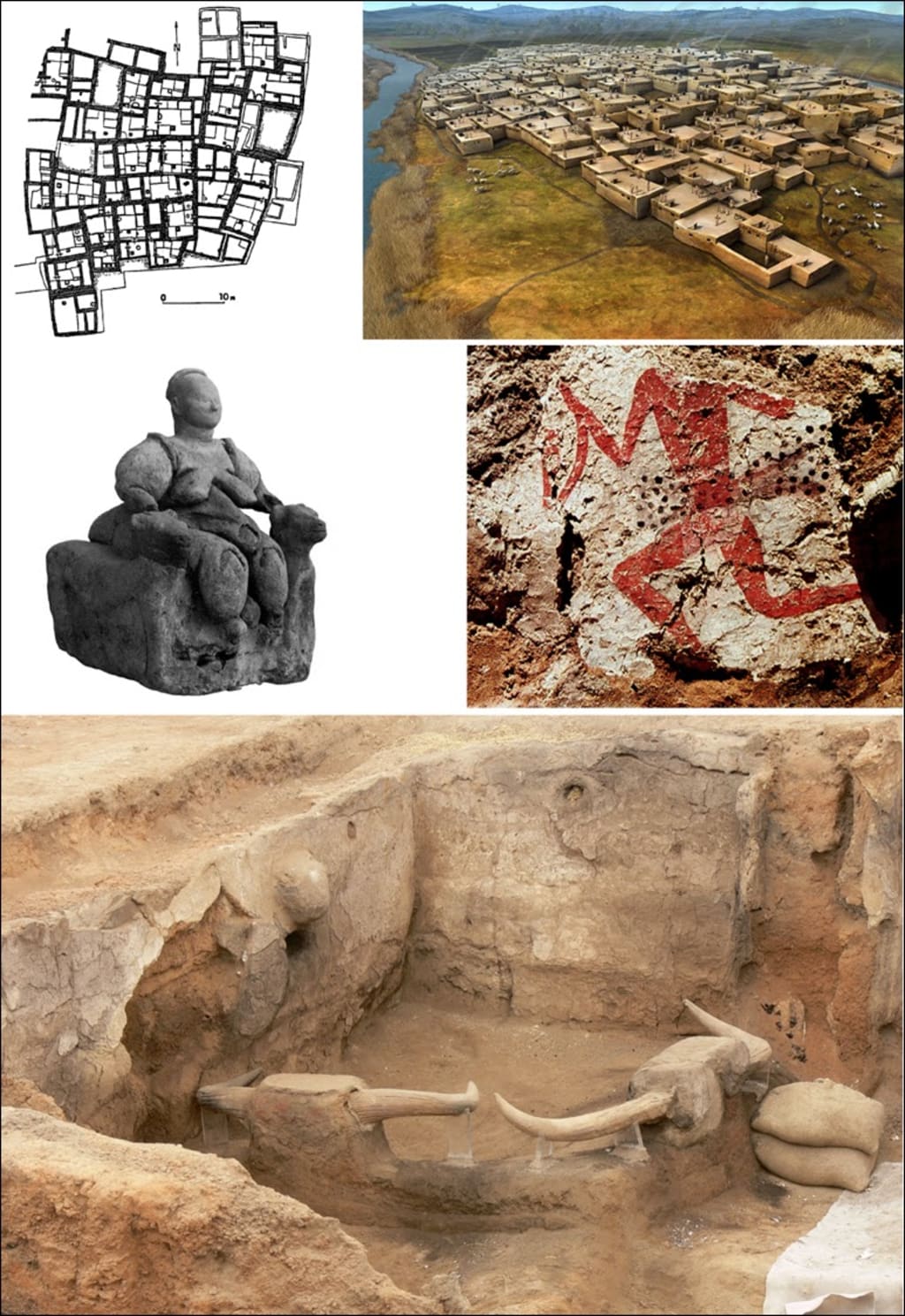In Plain Site
excerpt from a work in progress (and some historical background)

Çatalhöyük is an archeological site situated on the Konya plain in Turkey, and boasts extensive ruins of a group of prehistoric proto-cities. These hive-like structures were entered through the roofs, and fostered a tight-knit and unique communal structure of living. One of their most famous features were their burial practices: the dead were left on the rooftops to be de-fleshed by birds, and the skeletons were disassembled, and reassembled with other remains. They were decorated and painted, then these relics were shared between different homes where they would be enshrined beneath the floors. Children are thought to have been raised between different households as well. The inner walls of the small cell-like rooms were meticulously and repeatedly plastered and whitewashed. One of their favored objects [of worship?] are immense bull or Auroch horns that decorated many of the chambers. This culture flourished in the 7000's B.C.E.
This is an excerpt inspired by the civilization of Çatalhöyük, from a larger work currently under construction.
IN PLAIN SITE a crescent cradle bull-horned enshrined for millenia beneath a fork mound split path beckons bored archeologists, itinerate seekers, to explore and to bore subterranean moleholes,
into the depths of a SITE [the twin hills] where the prototype of all city life was ghosted; preserved, look,
whole hives of them, piled atop one another in
these honeycombed settlements that were
just sitting there in plain sight.
GOING WITH THE GRAIN as humanity renounces nomadic life, forming
a tight-knit [egalitarian?] community reminding us of
a warren of rabbits in neat n tidy tiny plastered houses, cell by cell, meter my meter/
what You saw in you polished Obsidian Mirrors,
Volcanic Disaster?
Beauty Pageants? in any case a
Civilized Settling with all its
pile-up
Craft Brewing in (Prehistoric) Caves
the Art of Ancient Ales is a modern Craft Beer craze, some would even say a fad (A FOOD FAD)
Those were The First Steps Toward City Life
IN SITU
They used to bury their reassembled dead under the floors of their homes, their little whitewashed cells of wood stone and adobe
plastered [out of sight, but not out of mind]:
Each chamber entered from the rooftops,
so their walk from cluster to cluster was upon streetways of roof which also served as Common Area and Market Space: binding hearth to hearth; the rooftops allowed the raptors and sundry birdlings to take the fleshy soft parts of cadaver, leaving the Sacred Bones for the people's reverence.
In plain sight, and already dreaming the sound of machines, one on top of the other in such close quarters with the treasure hoard of ancestral bones: where Elders were buried in the clean spaces under the bed platforms, while the buried baby ghosts found room under the fireplace/ infant flame and other youths
underneath
ABOVE the vultures soar but the upper storey monkeybar links chutes and ladders are the Commonplace path thruways, huge heaps of platforms piled to the sky in a mumbojumbo labyrinth of plastered whitewashed walls;
that infinite repetition of that one tiny rectangular space: the one
Home and the central focus of the family, reduplicated in all reverencing of Bull-Horns throughout this warren of rabbits—did we remember to leave
some of the dead on high in the piazza for public excarnation by raptor? for the defleshing of ancestral bones? we fetch the remains, deck them with shells and paint, fancy feathers, to take them down into the underlayers beneath the bed, below the hearth space, inhumated life expectancy possession. It is hard to let go. Relics of the Family Tree: bony roots, the
beam-house.
No longer side-scrolling but a fully interactive 3-D environment,
left in plain sight.
Another ghostly historical piece:
About the Creator
Rob Angeli
sunt lacrimae rerum et mentem mortalia tangunt
There are tears of things, and mortal objects touch the mind.
-Virgil Aeneid I.462






Comments
There are no comments for this story
Be the first to respond and start the conversation.